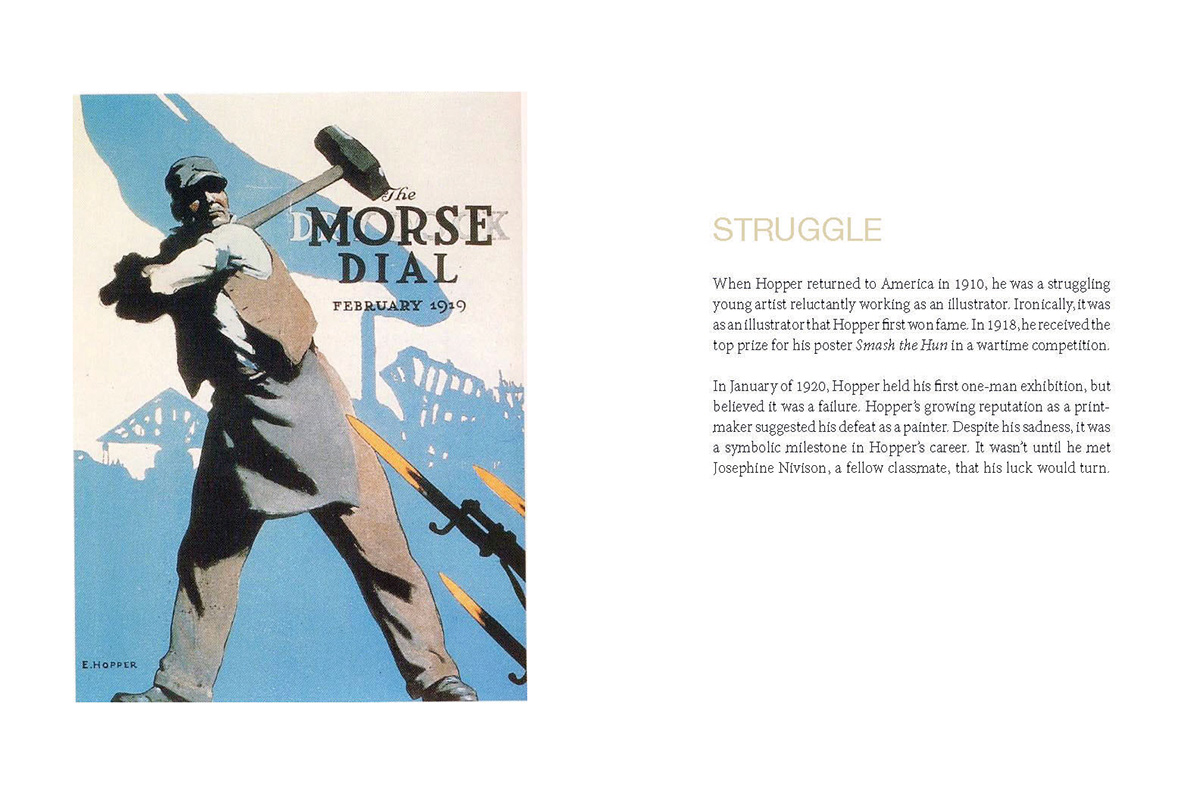This is a short book about the life of Edward Hopper, a painter and illustrator. The concept is that this is artist's own personal sketchbook. The book is a mix of images of the original pages from Hopper's sketchbook, his famous paintings, and information about his life.


Edward Hopper was born on July 22, 1882 in Nyack, New York, to a middle-class family that encouraged his artistic abilities. When he was a child he spent a lot of time by the sea in ship yards in his hometown. Hopper wanted to pursue a career as a naval architect because of this fascination with boats and the military. After attempting to build a cat boat and fail- ing he decided to purse another career path.
This page is a mix of Hopper's own notes and sketches with two of his famous painting in the place of the artist's original thumbnails.

An original page from Hopper's sketchbook.

When Hopper returned to America in 1910, he was a struggling young artist reluctantly working as an illustrator. Ironically, it was as an illustrator that Hopper first won fame. In 1918, he received the top prize for his poster Smash the Hun in a wartime competition.
In January of 1920, Hopper held his first one-man exhibition, but believed it was a failure. Hopper’s growing reputation as a print- maker suggested his defeat as a painter. Despite his sadness, it was a symbolic milestone in Hopper’s career. It wasn’t until he met Josephine Nivison, a fellow classmate, that his luck would turn.
Throughout the next 30 years, beginning in the late 1920’s, Hopper was considered the leading American artist of the period. Most of his paintings pertain a statement about the ever changing American lifestyle. He believed that Postwar America had caused more isolation and alienation among people. A feeling of loneliness and detachment consis- tently appear in his work. Hopper’s work was showcased in several retrospective exhibitions later in his career. Yet, with the emergence of Abstract Expressionism, Hopper’s style soon came to be regarded as illustrative; a painful comparison for the man who had disdained illustration.
The summer of 1923 greatly impacted Edward Hopper’s personal and professional life. During the summers, Hopper would escape the city. He spent most of the summer months along the coasts of Massachusetts and Maine. In Gloucester Massachusetts, he ran into Josephine Nivison, Jo for short, who had also studied at New York School of Art. She encouraged Hopper to continue painting and to consider using watercolors. Soon they became very close.
In 1924, Hopper was finally able to quit his job as an illustrator and support himself as a full time painter. That same year he married Jo. They split their time between New York City and their house in Cape Cod. The fast paced lifestyle of the city and the quieter life of the country influenced a lot of his artwork.

Hopper had finally achieved success and financial stability as a painter by the 1930’s and 40’s. Despite some health problems in the 1950s, he continued to create iconic and timeless work. By the time of his death, in 1967, his artwork was one of the most recognizable in the modern art world. His wife was left his collection, but upon her death just 10 months after her husband, Edward Hopper’s work was mostly donated to the Whitney Museum of American Art.



